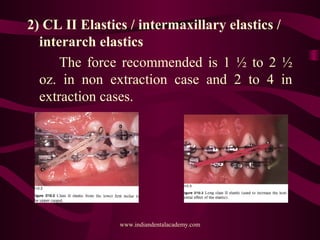class ii elastics force
Class II Force 1 elastic ¼ 6 ½ oz from upper cuspid to lower first molars. The effect of Class II elastics on bite opening and the extent of such an effect is uncertain.
Remove elastics to eat.
. Eliminates latex allergic reaction concerns. One month Force 2 elastic 316 8 oz worn second third and fourth month. Group 1 Twin Force.
Patients received fixed appliance therapy in combination with either Forsus or intermaxillary elastics. The force recommended is 1 ½ to 2 ½ oz. 22 patients were treated with class II elastics with initial and final mean age of 1587 and 1863 years respectively and mean treatment time of 275 years.
In non extraction case and 2 to 4 in extraction cases. Force in 4 bicuspid extraction cases. 25 patients were treated with the Twin Force with initial and final mean ages of 1791 and 2045 years respectively and mean treatment time of 253 years.
Beerden Gent and Limburg Belgium A method was developed for measuring bone displacements due to orthodontic forces. En-mass movement extraction class 2 3 elastics 4-5 ounces 113-142g. B Fixed functional appliance with impulsion force.
This malocclusion is one of the most common in orthodontic practice and its correction always seeking for the maximum efficiency can be achieved by several treatment protocols such as 2 or 4 premolars extraction maxillary molars distalization fixed functional appliances and intermaxillary elastics which can be particularly interesting in Class II subdivision cases. Essix Retainer lower arch. Class II Force 1 elastic ¼ 6 ½ oz from upper cuspid to lower first molars.
Class II elastics may be used for main and secondary objectives in the following clinical situations. Unrecognized by scores of professionals many of the current Class II correction mechanisms continue to block the advantages of the edgewise appliance by using tipping vectors. For Open bite up to 2 mm may be corrected with these elastics.
In non extraction case and 2 to 4 in extraction cases. Oesterle et al 4 found that force levels on elastic packs were closest to the two-time stretch of the lumen diameter. The effects of Class II elastic force on a dry skull measured by holographic interferometry Dr.
Class II elastics also make use of the normal mandibular excess by allowing the usual mandibular excess to take place without maxillary mesial dentoalveolar compensation plus a mm or so of actual distal upper buccal segment movement if it is a nonextraction treatment. 1 Intermaxillary elastics which have the capacity to produce both sagittal and extrusive forces at the point of attachment are the most popular mechanism for correction of sagittal problems. 15 The prescriptions were described in only 3 articles that required full-time wear7 13 18 Duration of active treatment with Class II elastics was mentioned in only 1 article 85.
Complement the Motion 3D Appliance with Carriere Oral Elastics which were designed specifically to work seamlessly with this appliance and provide optimum results. Allow full lateral mandibular movements. Class 2 elastics are used from the lower first molar to the upper canine tooth.
The force recommended is 1 ½ to 2 ½ oz. Force-1 to 2. The existing literature related to Class II treatment with inter-arch elastics highlighted optimal elastics forces ranging from 2 5669 g to 65 oz 18427 g 3 7 16.
Forsus group mean age 1419 102 years and elastics group mean age 1375 116 years. Download scientific diagram Direction of force for Class II correction. A ppliances designed for Class II correction generate either pulling interarch force vectors intermaxillary elastics or pushing interarch force vectors bite-jumping devices.
Rarely are they extended to the second molars. This article based on measurements of 30 cases illustrates that the effect of the vertical component of force from Class II elastics in reducing the intrusive force generated by. The wire dimensions were described in only 2 articles.
Skeletal andor dental Class II malocclusions anchorage reinforcement backward movement of the upper incisors mandibular arch advancement buccal tipping of retruded lower incisors bite opening class II2 midline deviation correction6. 516 inch 6 oz. One month Force 2 elastic 316 8 oz worn second third and fourth month.
Class II Elastics. Force for non-extraction cases 14 inch 6 oz. En-mass movement non extraction - class 2 3 elastics 5-6 ounces 142-170g.
They can be used for many different reasons such as Class 2 malocclusions to reinforce anchorage in a case where an extraction has been done to allow the maxillary incisors to move backwards and to correct midline deviation and allow buccal movement of backward-tipped lower incisors. Materials and Methods. This depends on the clinical situation.
B2 Class II Elastics interarch elastics. 45oz 126g indicate the force delivered if the elastic is stretched 3 x its size What forces do I need. Class II elastics are usually employed in the treatment of excessive overbite and overjet with the Begg technique.
50 packs of 100 elastics. For example Class II elastics the most common Class II corrector work by attaching an elastic from the mandibular molar to a hook on the maxillary canine Figure 3. Force 2 316 8 oz.
B3 Class III elastics interarch elastics. Dermaut DDS PhD and L. Carriere Class II Motion Appliance.
The results of this study show that force levels increased significantly when elastics were stretched from three times their lumen to the measured distance for class II and III corrections. Direct bond buccal tubes on lower first molars younger patients or lower second molars. The measurement is given on ounces or grams.
Both applied Class II elastics on 0016 0022-in stainless steel wires15 18 in an 0018-in slot bracket. CLASS II ELASTICS Class II Elastics extend from the anterior hook on the maxillary posted archwire typically mesial to the maxillary canine to the hook on the mandibular first molar. Use with aligner cases or ceramic and composite brackets.
Twenty-eight Class II subdivision patients were allocated to two groups using matched randomization. Class II elastics are auxiliary forces that can be classified as active elements in a fixed appliance system1 They have been used in the correction of Class II malocclusion since the early days of orthodontic treatment26 although some undesirable effects can occur depending on their vertical force vectors4610 The vertical force can extrude the mandibular molars and. A Class II elastics with traction force.
These elastics are available in two different force levels for both stages of treatment ensuring a smooth and timely transition to a Class I Platform. In the present study we tested 8 oz 22679 g force elastics considering their spreading in the clinical setting 17.
Elastics Bee Happy Orthodontics

Direction Of Force For Class Ii Correction A Class Ii Elastics With Download Scientific Diagram
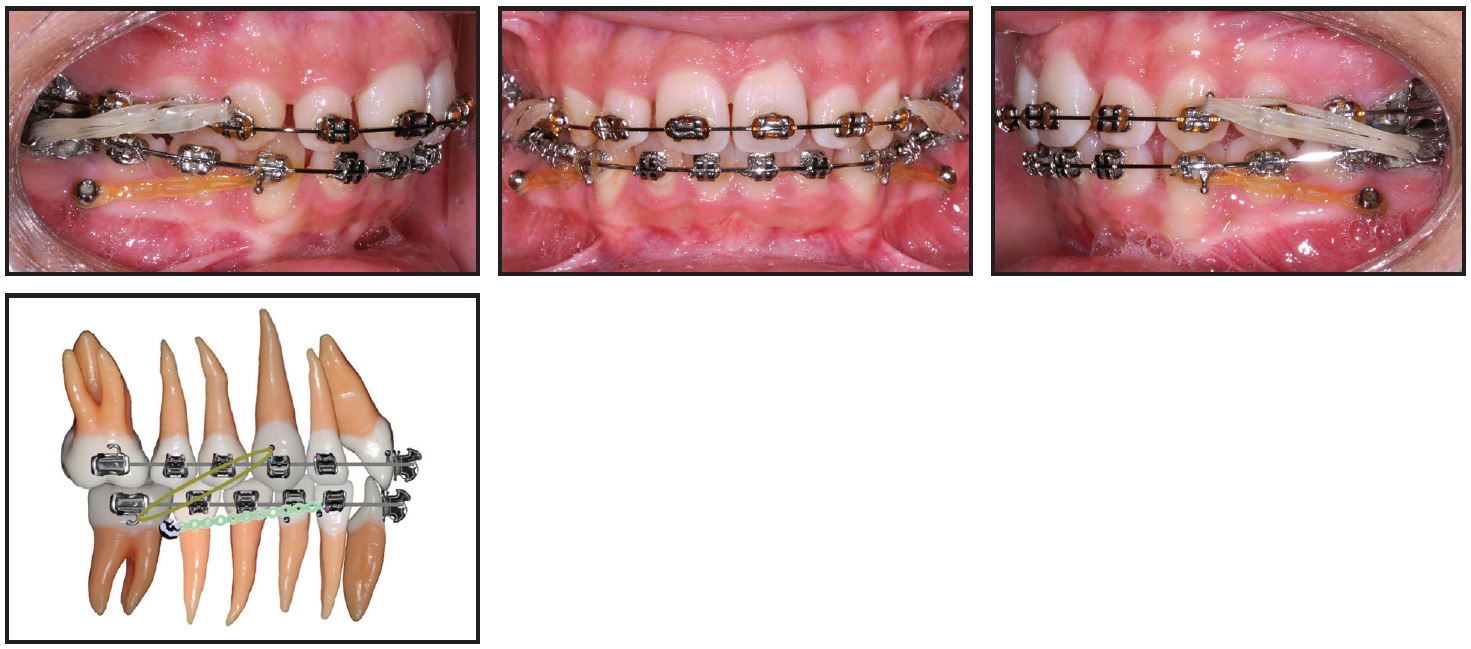
Case Report Jco Online Journal Of Clinical Orthodontics

How Orthodontic Elastic Bands Work Belmar Orthodontics
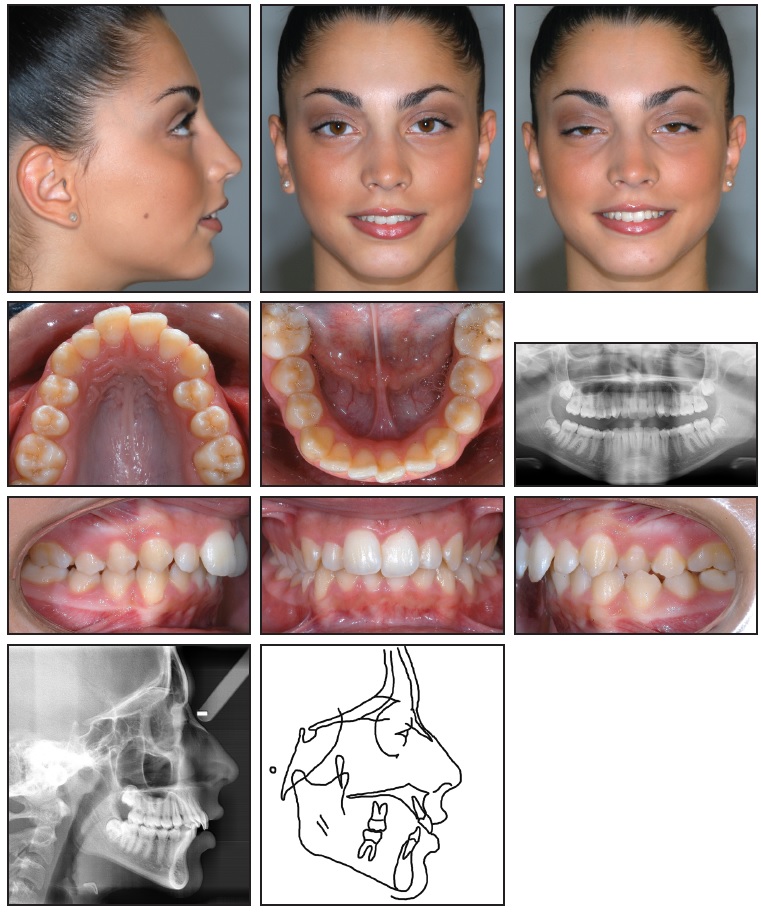
Case Report Jco Online Journal Of Clinical Orthodontics
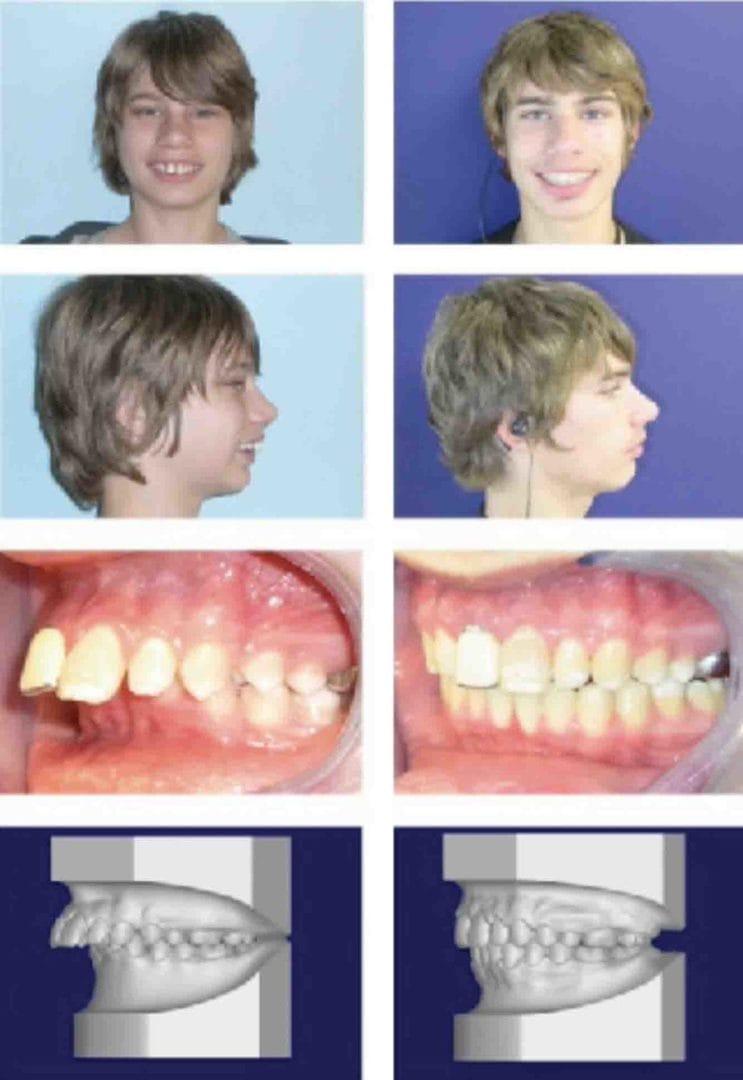
The Physics Of Class Ii Correction Orthodontic Practice Us
Elastics Bee Happy Orthodontics
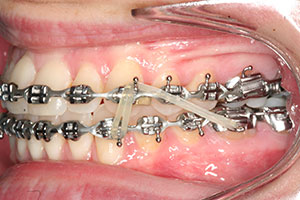
Elastic Wear Protocol Northlake University Orthocare Orthodontics

Class Ii Elastics Lateral View Hd Edition Youtube
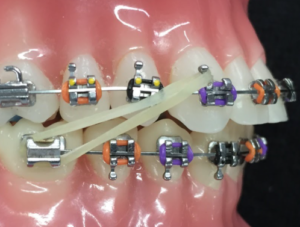
Are Class Ii Elastics As Effective As A Functional Appliance A Trial That May Answer This Question Kevin O Brien S Orthodontic Blog

The Physics Of Class Ii Correction Orthodontic Practice Us

A Horizontal And Vertical Forces Resulting From A Unilateral Class Ii Download Scientific Diagram

Light Class Ii Elastics 3 5 Oz Given For Canine Retraction Note That Download Scientific Diagram
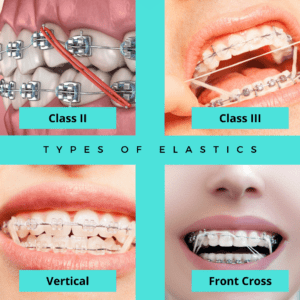
What Are Interarch Rubber Bands
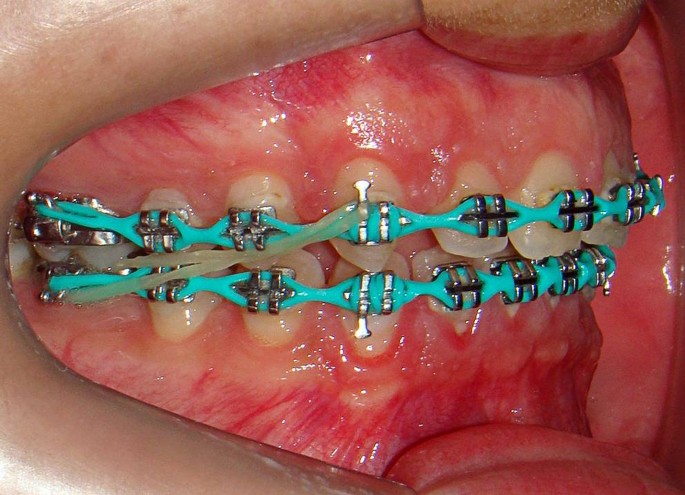
Soft Tissue Profile Changes In Angle Class Ii Patients Treated With Twin Force Or Intermaxillary Elastics A Comparison Springerlink

Intermaxillary Elastics Wise Ortho

Elastics Santa Rosa Orthodontics Braces Windsor Dr Bernstein
